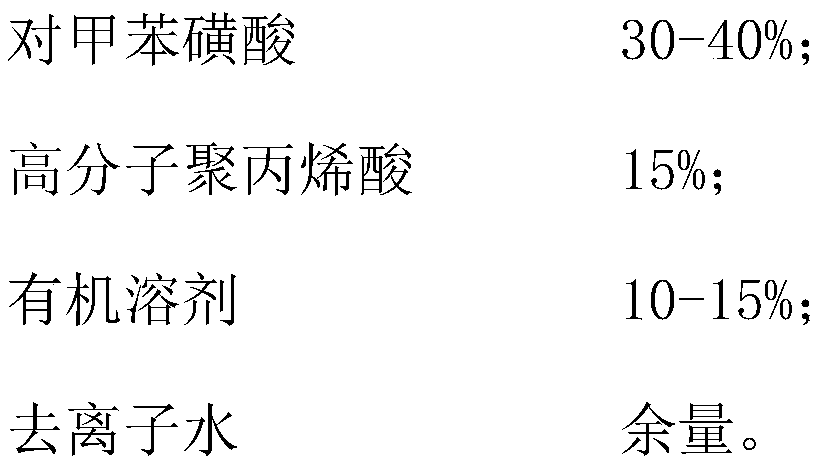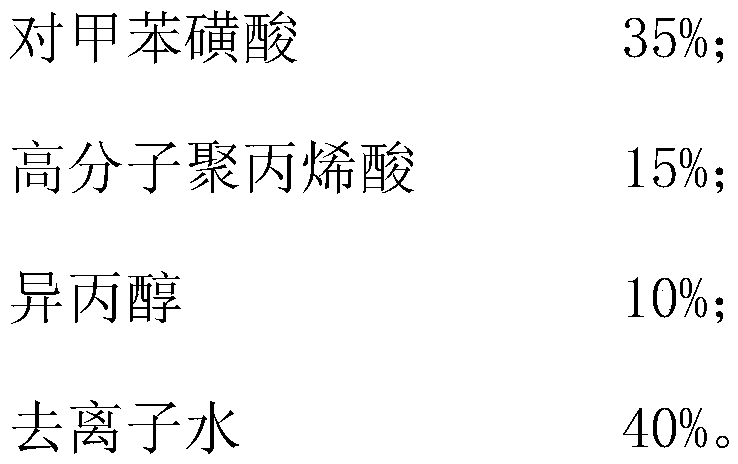A cashmere-like dyeing and finishing process of orange petal-shaped polyester-nylon composite fiber fabric and its fiber-opening agent
A polyester-nylon composite fiber, polyester-nylon composite technology, applied in the direction of fiber processing, fiber type, dyeing method, etc., can solve the problems of long process flow, damaged fabric strength, weak bonding force, etc., to shorten the dyeing process flow, Balance power loss, power effect small effect
- Summary
- Abstract
- Description
- Claims
- Application Information
AI Technical Summary
Problems solved by technology
Method used
Image
Examples
Embodiment 1
[0048] A cashmere-like dyeing and finishing process for orange petal-shaped polyester / nylon composite fiber fabrics, comprising the following steps:
[0049] (1) Open width refining
[0050] Wash and refine the polyester-nylon composite gray cloth with an open-width washing machine. The temperatures of the six washing tanks are 55°C, 65°C, 80°C, 95°C, 80°C and 40°C.
[0051] (2) Pre-shrinking - initial fiber opening
[0052] Add water, Yuzhongbao and the washed and refined polyester-nylon composite cloth in turn to the dyeing machine vat and run for 5 minutes, then add alkali weight reduction accelerator, oligomer remover and liquid caustic in turn, at 2°C / Raise the temperature to 100°C at a speed of 1 min and keep it warm for 30 minutes, then cool it down to 60°C at a speed of 2°C / min to drain the liquid; for the first time when entering clean water, raise the temperature to 80°C at a speed of 2°C / min and hold it for 10 minutes, then Cool down to 60°C at a rate of 2°C / min ...
Embodiment 2
[0075] According to the cashmere-like dyeing and finishing process of the polyester / nylon composite fiber fabric of embodiment 1, the difference from embodiment 1 lies in the composition of the fiber opener, and the fiber opener is composed of each component of the following mass percentages:
[0076]
[0077]
Embodiment 3
[0079] According to the cashmere-like dyeing and finishing process of the polyester / nylon composite fiber fabric of embodiment 1, the difference from embodiment 1 lies in the composition of the fiber opener, and the fiber opener is composed of each component of the following mass percentages:
[0080]
PUM
| Property | Measurement | Unit |
|---|---|---|
| degree of polymerization | aaaaa | aaaaa |
Abstract
Description
Claims
Application Information
 Login to View More
Login to View More - R&D
- Intellectual Property
- Life Sciences
- Materials
- Tech Scout
- Unparalleled Data Quality
- Higher Quality Content
- 60% Fewer Hallucinations
Browse by: Latest US Patents, China's latest patents, Technical Efficacy Thesaurus, Application Domain, Technology Topic, Popular Technical Reports.
© 2025 PatSnap. All rights reserved.Legal|Privacy policy|Modern Slavery Act Transparency Statement|Sitemap|About US| Contact US: help@patsnap.com



